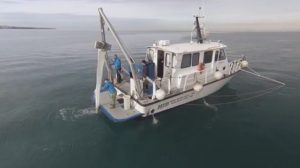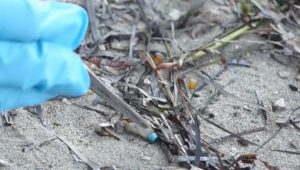When was the last time that you drank a glass of water? In that moment, you may have unknowingly consumed microplastics. In a recent study performed by Orb Media and the University of Minnesota School of Public Health, researchers found that 83% of tap waters tested from sources around the world contained microplastic fibers.
Microplastics have become ubiquitous in our environment and our food streams. Although they have been found in shellfish, table salt, and drinking water, the effects of microplastics on ecosystems and human health are still largely unknown. One recent study from Lund University showed that nano-sized plastic particles can travel up the food chain from plankton to large fish. The particles are small enough to pass through the blood-brain barrier causing damage to carp brains and subsequent changes in their feeding behavior. While there is evidence of the impact of microplastics on fish, the effects on humans are not well studied because finding unexposed subjects is challenging. Even so, there is enough concern surrounding these plastic particles that the US and UK have both banned microbeads, which were previously common in face wash and toothpaste.
Two JoVE articles have been published recently on the topic of microplastics. The first JoVE Video Article describes how to sample for microplastics on the ocean surface. Following collection, researchers demonstrate how to sort and size particles using Fourier-transform infrared spectroscopy. This protocol can help researchers around the world to develop proper monitoring strategies for microplastics in marine environments.
In addition to the problems caused by the physical presence of microplastics in aquatic ecosystems, microplastics can transport and release surface-adsorbed chemical compounds. This JoVE Video Article describes a method for measuring the amount of organochlorine pesticides on different types of microplastic pellets. The method can be adapted for the extraction of other common organic contaminants like polychlorinated biphenyls (PCBs).
Microplastics enter our environment through several different sources — the breakdown of larger plastic materials, washing of synthetic fabrics like polyester, and the addition of microbeads to personal care products. While microbeads were first developed more than 50 years ago, research into the effects of microplastics only began in the last decade. Techniques like those published in JoVE can help accelerate research in this emerging field to more quickly understand the many ways that microplastics may be affecting us and our environment.
If you are interested to read and watch more JoVE Video Articles in environmental sciences, then check out this link below.





